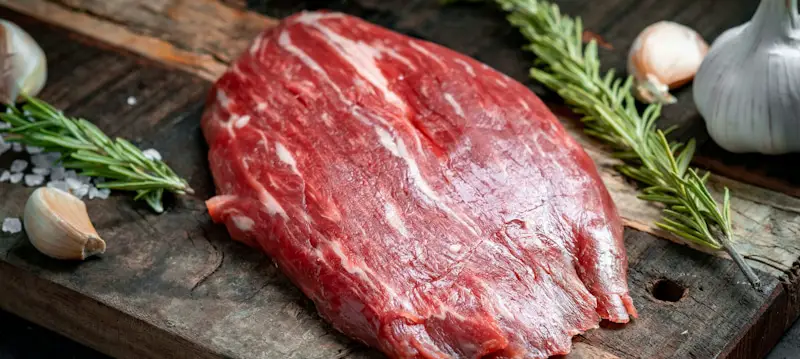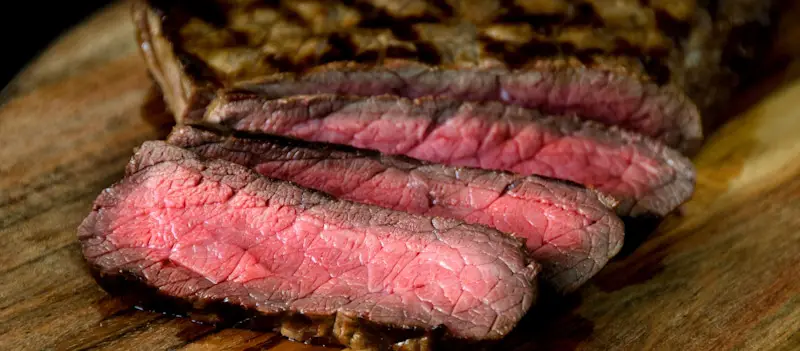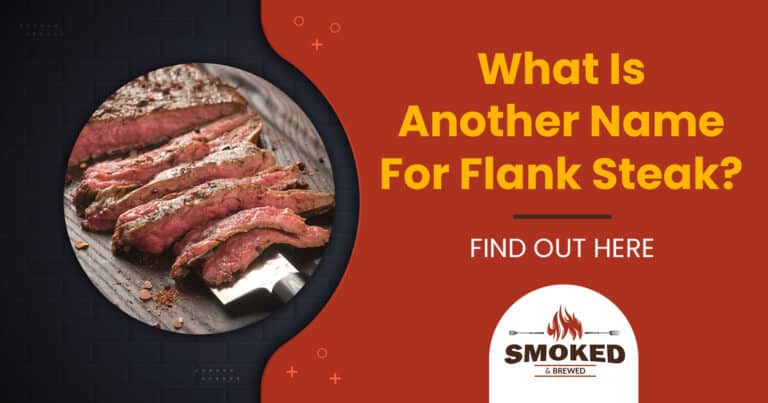Most of us love the wonderful umami taste of beef. Don’t we? But many individuals are also skeptical about having this gastronomic delight because of its high-calorie content. Flank steaks are different. They are one of the medium expensive butcher’s cuts and are known for their unique taste and low-fat content. Flank steaks have no marbling. They can be broiled, grilled, seared, or roasted and are best known to improve the taste of fajitas.
Flank Steak is known by names like ‘Jiffy Steak,’ ‘Boneless Chuck Filet Steak,’ or ‘Bavette’ in French. It is the preferred steak for making ‘London Broil’. Some of the other names for flank steak are ‘Fraldinha’ or ‘Vazio’ in Brazil and ‘Arrachera’ in Spanish. The Skirt Steak and the Hanger Steak are similar to Flank Steak but are longer and thinner.
Flank steaks can be cooked in so many different ways. They are the go-to cut for beef dishes in expensive restaurants. Since they are so popular in the western world, they are called by so many different names in different parts of the world. So are you wondering what a flank steak is? To avoid the confusion with names and to find out what makes flank steaks so palatable, continue reading.

What Is Flank Steak?
In the words of Julia Collin Davinson, ‘Flank steak is the boneless, skinless chicken breast of the beef world.’
Some say that flank steak is technically not a steak. It is a cut from the animal’s abdominal muscles, right behind the chest area. To be more specific, it is obtained from the steer below the sirloin and loin portions. It helps the cow to twist and walk, and hence it has long, tough, lean, and thick muscle fibers. This is what makes the flank steak somewhat chewier and less juicy than other types of steaks.
Flank steaks have the least amount of fat content and thus do not need any trimming. They are usually cut into small pieces and are about a foot long with a thickness of ~1 inch. Sometimes the flank steaks may have some fat at the tapering and thinner end. If you are buying from the grocery store, one flank steak will roughly weigh between 1-4 pounds. They can be bought in bulk, vacuum sealed, and stored in the freezer for up to a year.
Though flank steak is medium expensive and a relatively flat cut of beef, it is still rich in flavors and is preferred by those who love lean meat. It is a versatile cut of beef and can be used to prepare a large variety of dishes. They aren’t very difficult to cook as most of us think. If the flank steak is well-marinated and prepared correctly with methods such as slow braising, broiling, low and slow smoking, or grilling over high heat, the meat always turns out to be tender and tasty.
What’s Another Name For Flank Steak?
Flank steaks are called by so many names across the world. French people call this cut ‘Bavette,’ which literally means a ‘bib.’ In Brazil, it is locally called ‘Fraldinha’ or ‘Vazio’. Since the chunk of meat is boneless, it is thus called the ‘Boneless Chuck Filet Steak’ or ‘Boneless Chuck Slices.’
They are most popularly known as the ‘London Broil’ as it is the meat of choice for preparing the dish. Since flank steaks have a low-fat content, people prefer broiling over other cooking methods. Broiling is best done by cooking the steaks for about 5 minutes on each side until the meat turns out to a medium-rare degree of doneness. This method helps in retaining the crispiness around the edges of the steak without overdoing it. The name, however, has no connection with the city of London, and the origin of the name stays unknown.
Flank steaks are most commonly reserved by chefs for preparing fajitas or other special beef dishes. This is why this cut of meat came to be known as the Butcher’s cut. Some also call them ‘Hempe Steak’.
Since the meat can be prepared relatively faster with the grilling method, ‘Jiffy Steak’ is another common name for a flank steak. However, since the meat has very low-fat content, due care and attention should be given while grilling flank steaks.
Many of us often confuse flank steaks with hanger or skirt steaks; however, these cuts are not the same. Both flank steak and skirt steak are obtained from the diaphragm region. However, skirt steak has more fat than flank steak and is richer in flavors. Flank steak is more tender, delicious, and bold than skirt steak.
How To Identify A Flank Steak?
If you happen to be at the supermarket or a butcher’s point, then you can easily recognize flank steak for its visible directions of cross-gain marks. It is a deeper red than other steaks such as rib-eye steak or New York steak. For making beef strips, you are required to slice against the grain, preferably at an angle of 45 degrees. Slicing it with the grain will put forth an unpleasant, chewy taste. Always choose 100% grass-fed flank steaks for the best results.
[amalinkspro_table id=”2448″ new-window=”on” nofollow=”on” addtocart=”off” /]
What Does Flank Steak Tastes Like?
If you do not like the fatty and juicy mouthfeel of the more marbled cuts, yet want to relish the goodness of beef, then flank steak is definitely a great option for you. It has a bold and rich beefy or umami flavor with the least amount of natural beef fat.
How To Tenderize Flank Steak?
Flank steak is considered difficult to prepare, and thus, it is mostly used by professional pitmasters and chefs in restaurants. For any meat that has a high amount of fat content, the fat itself breaks down to tenderize the meat during the cooking process. However, since flank steak is a lean cut of meat, you would need some manual processing to tenderize the meat. Marinades like citrus, Worcestershire sauce, wine, or other acidic or enzymatic ingredients (especially pineapple and orange fruit juices) work the best for tenderizing flank steaks. Marinating helps to break down the muscle fibers or tenderize them and also impart tons of flavor. Braising flank steaks is especially recommended if you are preparing meals with gravy.

What Are The Ideal Recipes For Flank Steak?
The meat is quite underrated, but its usefulness stays unlimited. Flank Steak is ideal for preparing recipes that call for beef strips, which means you can prepare some delicious stir fries and fajitas with flank steaks. You can also grill them alongside seasonal vegetables, make a salad, or just put them in rice bowls to turn the blandest dishes into simple, mouth-watering, and protein-rich meals. It takes about 6-8 hours if you are low and slow cooking the flank steaks and about 6-7 minutes if you are grilling at medium flames. You can also sear, roast, or broil flank steaks. Always allow the meat to rest for 5-10 minutes before serving and remember to cook them until the internal temperature reaches 145℉.
Conclusion
Flank steaks are one of the most underrated classes of steaks. They are a breeze to cook, and there are just so many ways to prepare them. If you are someone who has high gastronomic desires but believes in healthy living, then flank steak is the right option for you. On average, 2-3 ounces of flank steak will have 290 to 300 calories and contain 7 grams of fat. This is pretty much less compared to other cuts of beef. If you haven’t tried flank steak yet, it is definitely worth giving a go. Happy grilling!
Scot has loved smoking food in his free time for the last few years. Each major holiday or off-weekend, Scot spends days testing and prepping new recipes for perfection.

